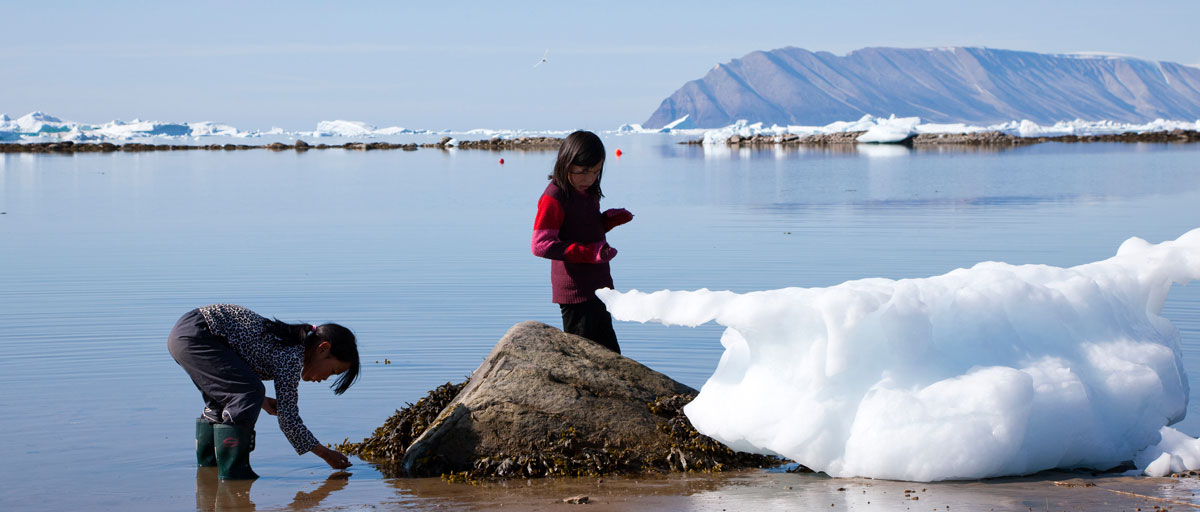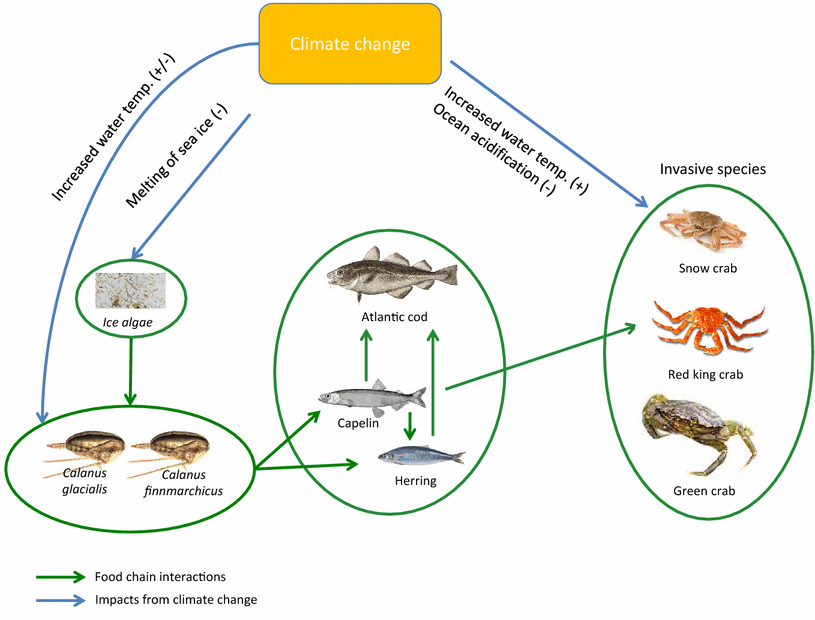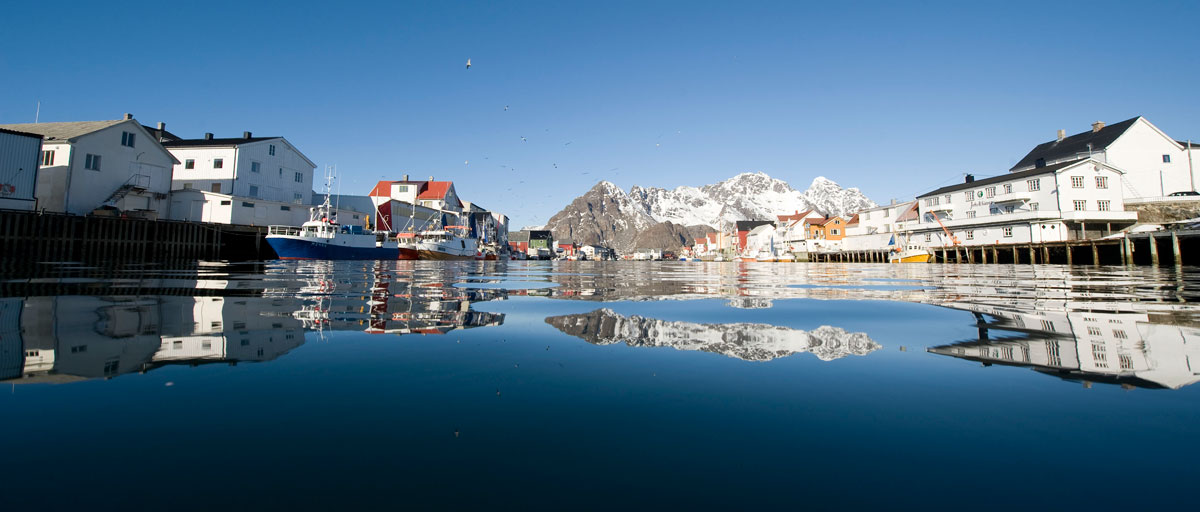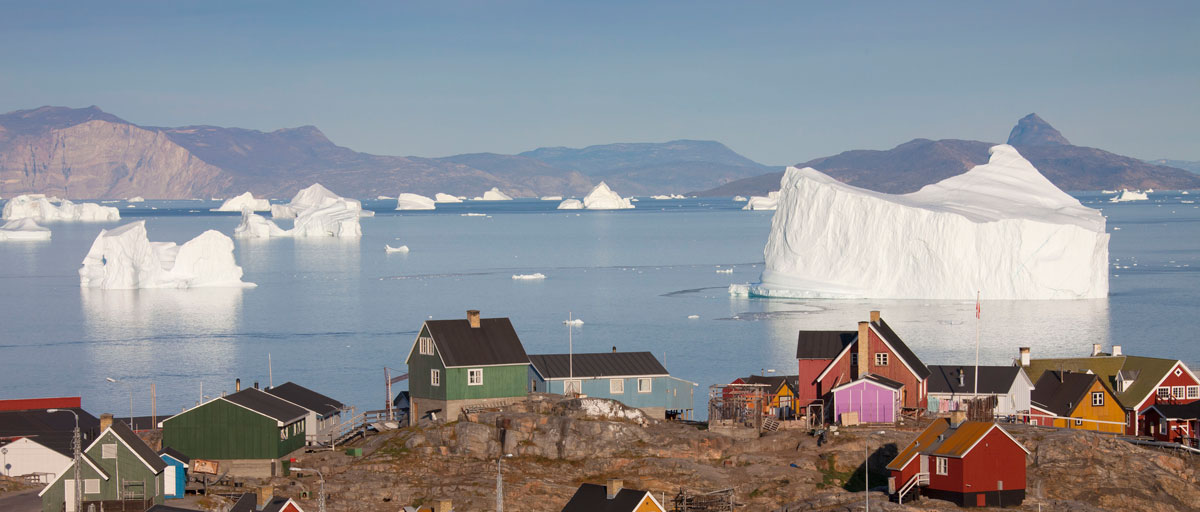
A recent study published in Ambio proposes a new framework to support management that builds on a social–ecological system perspective on the Arctic Ocean. Photo: A. Maslennikov/Azote
Bildtext får vara max två rader text. Hela texten ska högerjusteras om den bara ska innehålla fotobyline! Photo: B. Christensen/Azote
Climate change in the Arctic
Defrosted ocean futures
A new framework suggested to manage complex climate futures in the world’s most northern ocean
• Any attempt to manage a complex system like the Arctic Ocean must account for the global context and interactions between humans and nature
• Based on this insight a group of researchers propose a new framework to support management in the Arctic Ocean
• Their holistic approach can help managers identify looming problems and prioritise among solutions even when available data are limited
The Arctic Ocean is not only the smallest, shallowest and most northern ocean in the world, it is also experiencing some of the most dramatic effects of climate change and other environmental perturbations. Any attempt to manage such a complex system must simultaneously account for the global context and multiple local to global interactions between humans and nature. Not to mention possible unexpected abrupt changes, which can and have occurred as ecosystems in the Arctic lose resilience.
A recent study published in Ambio proposes a new framework to support management that builds on a social–ecological system perspective on the Arctic Ocean.
The study is part of an Ambio special issue on the European Union project Arctic Climate Change, Economy and Society (ACCESS).
The authors behind the study are Anne-Sophie Crépin, Åsa Gren, Gustav Engström and Daniel Ospina, from the centre and the Beijer Institute of Ecological Economics.
Their article illustrates the framework’s application for two policy-relevant climate change scenarios: a shift in zooplankton composition and a crab invasion.
Our holistic approach can help managers identify looming problems arising from complex system interactions and prioritise among problems and solutions, even when available data are limited.
Anne-Sophie Crépin, main author
Operationalizing the social-ecological approach
The researcher call their approach Integrated Ecosystem-Based Management (IEBM). It merges insights from Ecosystem-Based Management (EBM) with a Social–Ecological System (SES) approach to support management during uncertainties about future development.
What this means is that while EBM focuses on the nature part of an ecosystem, IEBM focuses on sustainably managing both nature and humans together, as an integrated whole.
The SES approach in itself is about picturing a system where social and ecological patterns and processes interplay.
However, IEBM focuses more explicitly on management and “takes into account the crucial role of ecosystems to provide goods, services and other relevant activities that contribute directly or indirectly to human well-being and Arctic sustainable development,” the authors argue.
Climate, zooplankton and fish
The authors identified six future scenarios, and focus more in detail on two of them. The first scenario focuses on how a warmer climate will likely favour the less fatty Calanus finmarchicus at the expense of the dominant zooplankton species Calanus glacialis. Such a shift could have negative impacts on the species that feed on zooplankton, like capelin. Not to mention the potential spin-off effects on herring and Atlantic cod, which in their turn prey on the capelins.
The second scenario in focus looks into a potential future where the introduced invasive species red king crab has grown to be of great economic importance in parts of the Arctic. Already today, the red king crabs supports a 26 million USD fishery in the Barents Sea, but at the same time the crabs have also been reported to impact bottom-dwelling plants and animals in places like northern Norway and the Kola Peninsula in Russia, including the predation on capelin eggs.
“Examining jointly both scenarios of focus reveals that competition from red king crabs, with associated increased predation pressure on capelin larvae, could further reinforce a decreasing trend in fish stocks from a shift in Calanus species,” the authors explain. Thus the two main scenarios in the study also interact in ways that are complex and policy relevant.

Food chain and climate change interactions in an Arctic marine ecosystem. From Crépin, et.al 2017. Ambio 46 (Suppl 3): 475. Click on link to access publication.
Highlighting non-obvious links
The authors also emphasize that the Arctic Ocean needs to be put in a global economic and governance context. One example discussed is how climate change impacts in other parts of the world, e.g. decreasing fish stocks combined with crop failures, might lead to incentives to fish more in the Arctic.
Future extensions of the suggested IEBM framework, the authors write, could be to go from qualitative assessments to also quantify the impacts of each scenario on the whole Arctic Ocean social-ecological system.
“The information provided in our framework could facilitate such an exercise by highlighting non-obvious dynamic social, economic, and ecological links that need to be included,” they add.
Another next step could be to develop a user-friendly interface to test different management strategies and their performance against particular objectives.
Methods
The researchers collected social, ecological and economic information about the Arctic Ocean through expert knowledge elicitation and literature studies. Based on this information they built a model framework of social-ecological interactions and identified six plausible scenarios of ecosystem change that could occur within 50 years or earlier. Special emphasis was given to the impacts of each scenario on ecosystem services and their response to climate change. In next step they selected two scenarios (a shift in zooplankton composition and a crab invasion) as these two featured “strong social–ecological interactions, complex dynamics, substantial uncertainties, potentially strong policy relevance and potential interactions between both scenarios through focus on a common key species,” namely the red king crab. They analysed these scenarios using minimal conceptual models of social-ecological interactions.
Crépin, A-S., Gren, Å., Engström, G., and Ospina, D. 2017. Operationalising a social–ecological system perspective on the Arctic Ocean. Ambio 46(Suppl 3): 475. https://doi.org/10.1007/s13280-017-0960-4.
Anne-Sophi Crépin researches the interplay between economic incentives, ecosystem regime shifts, policy and human behaviour.
Åsa Gren's research focuses on sustainable and resilient urban development in the context of ecosystem services.
Daniel Ospina-Medina is a PhD student, studying how rural landscapes and livelihoods change, in the context of increasing global connectivity and urbanization.








